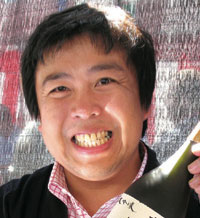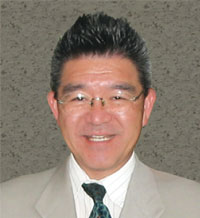Sake Consumption during the Showa Period (1926-1989)
When the Sino-Japanese War broke out in 1937, food shortages started and sake rice was restricted, which reduced the volume of sake produced year-by-year.
As sake became less available, “Kingyo-zake” (sake diluted with water) appeared on the market. To crack down on diluted sake, the Japanese government enacted standards for sake according to alcohol content in1940. A grade system of Special Grade and First Grade were enacted for sake from 1940 to 1943. As the war raged on, sake breweries were reorganized and consolidated by 1943, reducing the number of sake breweries from approximately 8,000 to 4,000 breweries. Although the sake rationing system was abolished after the war, the grade system to assess sake as Special grade, First grade and Second grade remained.
Sake production volume in Japan dropped to 39,080,000 U.S. gallons by 1945, and to 23,830,000 U.S. gallons by 1947. The lack of sake prompted sake production in secrecy. As a measure to compensate for the lack of sake at this time, a sake product was developed by adding distilled alcohol to brewed sake.
Taverns serving whiskey started operating by 1955, prompting the rapid growth of Western alcohol such as whiskey, wine, beer, etc., which slowed the growth of sake consumption that expanded rapidly after the war.
昭和の酒
昭和12年に日中戦争が始まると、食料事情も厳しくなり酒造原料米も制限され、生産される酒の量も年々減った。
酒が少なくなるに従って水で薄めた「金魚酒」が出回るようになり、これを取り締まるために政府は、昭和15年にアルコール濃度による酒の規格を制定し、15年から18年にかけて特級・1級等の級別制度を作り、さらに昭和18年には戦争の激化に伴い酒造場が統廃合され約8000蔵から4000蔵となった。
戦後、酒の配給制度は廃止されたが、特級・1、2級の審査による級別制度は残された。
昭和20年には、全国の清酒生産量は82万石、22年には50万石にまで落ち込んだ。そのために、酒が足りなくなり密造酒が横行した。この時期の酒不足を補う対策として三倍増醸酒が開発された。
昭和30年代にはウイスキーを飲ませる酒場が生まれ、ウイスキー、ワイン、ビールなどの洋酒や焼酎が急成長し、戦後急拡大していた清酒の伸びが衰えはじめた。
As sake became less available, “Kingyo-zake” (sake diluted with water) appeared on the market. To crack down on diluted sake, the Japanese government enacted standards for sake according to alcohol content in1940. A grade system of Special Grade and First Grade were enacted for sake from 1940 to 1943. As the war raged on, sake breweries were reorganized and consolidated by 1943, reducing the number of sake breweries from approximately 8,000 to 4,000 breweries. Although the sake rationing system was abolished after the war, the grade system to assess sake as Special grade, First grade and Second grade remained.
Sake production volume in Japan dropped to 39,080,000 U.S. gallons by 1945, and to 23,830,000 U.S. gallons by 1947. The lack of sake prompted sake production in secrecy. As a measure to compensate for the lack of sake at this time, a sake product was developed by adding distilled alcohol to brewed sake.
Taverns serving whiskey started operating by 1955, prompting the rapid growth of Western alcohol such as whiskey, wine, beer, etc., which slowed the growth of sake consumption that expanded rapidly after the war.
昭和の酒
昭和12年に日中戦争が始まると、食料事情も厳しくなり酒造原料米も制限され、生産される酒の量も年々減った。
酒が少なくなるに従って水で薄めた「金魚酒」が出回るようになり、これを取り締まるために政府は、昭和15年にアルコール濃度による酒の規格を制定し、15年から18年にかけて特級・1級等の級別制度を作り、さらに昭和18年には戦争の激化に伴い酒造場が統廃合され約8000蔵から4000蔵となった。
戦後、酒の配給制度は廃止されたが、特級・1、2級の審査による級別制度は残された。
昭和20年には、全国の清酒生産量は82万石、22年には50万石にまで落ち込んだ。そのために、酒が足りなくなり密造酒が横行した。この時期の酒不足を補う対策として三倍増醸酒が開発された。
昭和30年代にはウイスキーを飲ませる酒場が生まれ、ウイスキー、ワイン、ビールなどの洋酒や焼酎が急成長し、戦後急拡大していた清酒の伸びが衰えはじめた。








